Search
Search Results
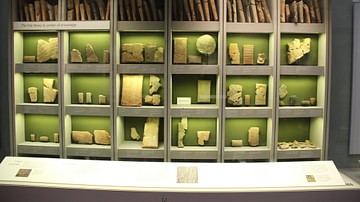
Definition
Library of Ashurbanipal
The Library of Ashurbanipal (7th century BCE) is the oldest known systematically organized library in the world, established in Nineveh by the Neo-Assyrian king Ashurbanipal (r. 668-627 BCE) to preserve the history and culture of Mesopotamia...
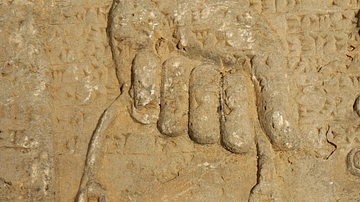
Image
Assyrian Ceremonial Bucket (Banduddu)
This is a close-up image of an Assyrian bucket (banduddu) held by a protective spirit (Apkallu). During certain ceremonies, this bucket was filled with a fluid and the Apkallu dips a pine cone (mullilu) into it; the Apkallu then sprinkles...
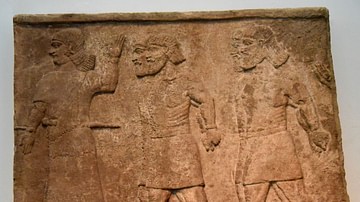
Image
Review of Arab Prisoners, Assyrian Relief
Assyrian relief, from the Central Palace at Nimrud (ancient Kalhu), Mesopotamia, Iraq, Neo-Assyrian Empire, c. 728 BCE. This is part of a series of reliefs showing Arab prisoners brought before the Assyrian King Tiglath-Pileser III (r. 744-727...

Image
Assyrian Deportation of People
Assyrian relief, from the Central Palace at Nimrud (ancient Kalhu), Mesopotamia, Iraq. This is one of a series of panels that showed Tiglath-Pileser III's military campaigns in modern-day southern Iraq. On the left is a captured town, with...

Image
Assyrian Bracelet
A close-up image of a rosette-type bracelet. This is part of a large alabaster bas-relief which depicts an eagle-headed and winged protective spirit, Apkallu or Sage. The rosette lies at the ventral surface of the left wrist of the protective...

Image
High-Ranking Assyrian Officials
An almost 3-meter-high alabaster bas-relief depicting four high-ranking Assyrian officials or dignitaries, stepping forward to greet the Assyrian king, Sargon II. From the Royal Palace of Sargon II at Khorsabad, in modern-day Nineveh Governorate...

Image
Map of the Neo-Assyrian Empire
This map illustrates the rise and territorial expansion of the Neo-Assyrian Empire (circa 911–609 BCE), a dominant Mesopotamian power that emerged after earlier phases of Assyrian history. Unlike their predecessors, Neo-Assyrian kings pursued...

Definition
Tiglath Pileser I
Tiglath Pileser I (reigned 1115-1076 BCE), an Assyrian king of the period known as the Middle Empire, revitalized the economy and the military that had been suffering, more or less, since the death of the king Tukulti Ninurta I (1244-1208...
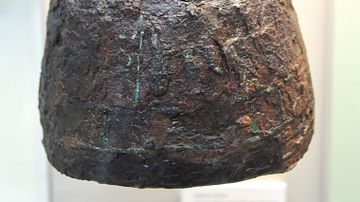
Image
Assyrian Helmet
Assyrian military equipment was particularly effective. Pointed helmets deflected blows or missiles, and were commonly issued to Assyrian soldiers. This iron example was decorated with bronze inlay, now corroded to a greenish color. The design...
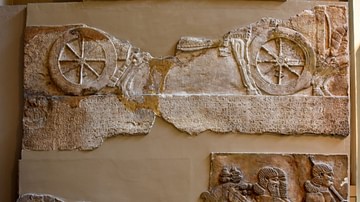
Image
Assyrian Chariots
Assyrian wall panel, from the Central Palace at Nimrud (ancient Kalhu), Mesopotamia, modern-day Iraq, reused later in the South-West Palace, from the reign of Tiglath-Pileser III, c. 728 BCE. One of a series, it shows two disconnected scenes...